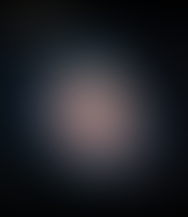NASA released tantalizing images and data gathered by the agency’s powerful James Webb Space Telescope, showing off vibrant nebulas and exotic galaxies in unprecedented detail.

The first long-awaited images from the James Webb Space Telescope were released by NASA and its partners — the European Space Agency and the Canadian Space Agency — for the world to see during a media event on July 12. This comes less than a day after President Joe Biden unveiled the first science-quality image during a White House event.
“Today, we present humanity with a groundbreaking new view of the cosmos from the James Webb Space Telescope – a view the world has never seen before,” said NASA Administrator Bill Nelson. “These images, including the deepest view of our universe that has ever been taken, show us how Webb will help to uncover the answers to questions we don’t even yet know to ask; questions that will help us better understand our universe and humanity’s place within it.”
The images join the very first picture from the James Webb Space Telescope, or JWST, that NASA and President Joe Biden released yesterday during a special briefing at the White House. That first picture — a portion of the night sky called SMACS 0723 — showcased a dizzying array of thousands of distant galaxies, all bundled into just a tiny dot in the sky about the size of a grain of sand when held out an arm’s distance. NASA hailed the image as the deepest infrared image of the Universe ever taken. In fact, the light from some galaxies in the picture has traveled roughly 13 billion years to reach JWST.
The highly-anticipated images show full-color details and information needed for scientists and astronomers as the space telescope begins to showcase its full capabilities and captures of spectroscopic data.
With an expanse of more than 21 feet (6.4 m) across, this is the largest mirror ever sent to space. It was designed to gather infrared light and enable humanity to peer back to the origins of our universe.
Two and a half decades in the making, the $10 billion James Webb Space Telescope has been aligned and calibrated with precision over the past few months in preparation of capturing imagery by this powerful observatory.
Each of the 18 hexagonal mirror segments had to be meticulously unfolded and tweaked so that they ultimately act as one huge reflective piece.
Since its Christmas Day 2021 launch, scientists and engineers have worked on an ambitious schedule to ready the space telescope’s instruments and hardware. After more than six months in space, the observatory is now able to collect enough photons to create some of the deepest science-quality images of our cosmos.
“This is a singular and historic moment,” said Thomas Zurbuchen, associate administrator for NASA’s Science Mission Directorate. “It took decades of drive and perseverance to get us here, and I am immensely proud of the Webb team. These first images show us how much we can accomplish when we come together behind a shared goal, to solve the cosmic mysteries that connect us all. It’s a stunning glimpse of the insights yet to come.”
CARINA NEBULA

The Carina Nebula, located about 7,00 light-years away, is a stellar nursery with “Cosmic Cliffs” towering as high as 7 light-years. It shows the earliest, rapid phases of star formation, according to NASA, that were previously hidden.
SOUTHERN RING NEBULA
Using two different instruments, the Webb telescope was able to bring out new details of the Southern Ring Nebula, located about 2,000 light-years away. According to NASA, the Near-Infrared Camera produced the image on the left and it shows a white dwarf to the lower left of the bright center star, which is partially hidden by the main star’s diffraction spike. However, the Mid-Infrared Instrument on the right was able to see that second star cloaked in thick layers of dust.
STEPHAN’S QUINTET

This image of Stephan’s Quintet, a galaxy cluster located in the constellation Pegasus, was revealed by Webb in unprecedented detail, according to NASA. The galaxy on the left is about 40 million light-years from Earth, while the other four are about 290 million light-years from Earth.
WASP-96B

By observing exoplanet WASP-96 b, located about 1,150 light-years away during transit of its host star, Webb was able to make out the most detailed spectrum of an exoplanet’s atmosphere to date. It includes signatures of water, along with evidence of haze and clouds. NASA plans to use the telescope to study hundreds of other planets’ atmospheres.
SMACS 0723

SMACS 0723 is the deepest and sharpest infrared image of the distant universe so far, according to NASA. “Webb’s First Deep Field” shows thousands of galaxies from more than 13 billion years ago. It shows a patch of sky that is about the size of a grain of sand held at arm’s length. This image was created with a combined exposure time of about 12.5 hours. The previous record for the deepest look into the universe — the Hubble eXtreme Deep Field in 2012 — had a combined exposure time of more than two weeks using the Hubble Space Telescope.





Comments